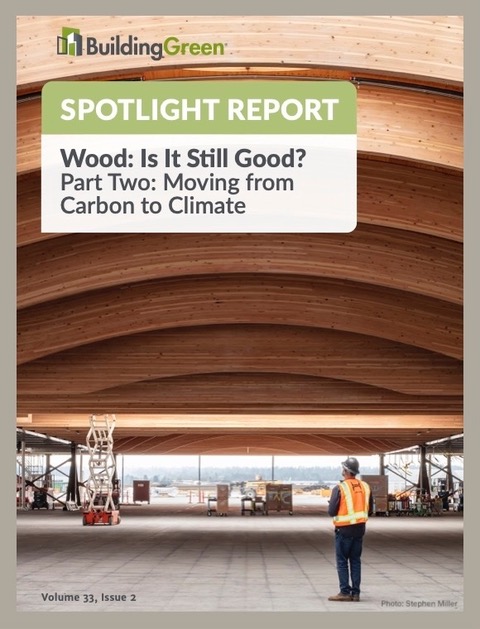Spotlight Report
Wood: Is It Still Good? Part Two: Moving from Carbon to Climate
Are wood products inherently carbon neutral?
Many people think they are even better: “net carbon storing,” or “carbon negative.” Because of this, the green building community has hoped that mass timber will drive decarbonization.
But it turns out that scaling that up could make things worse instead of better. So there’s a new concept in town: “climate smart.” Instead of embodied carbon alone, climate-smart practices focus on our increasingly fragile forests. They prioritize the many benefits of healthy, resilient forests, like:
-
groundwater filtration
-
vast carbon banks in soil and root systems
-
enhanced resistance to climate impacts
-
protection and regeneration of native ecosystems
Part One of this series advised against making or giving credence to blanket carbon-neutrality claims. Part Two explores the meaning and potential of broadening our scope to consider the climatological, ecological, and socioeconomic implications of forests, forestry, and wood products.
To do that, this spotlight report delves into three major questions:
-
What keeps forests as forests?
-
What must the green building community understand today so that we can send coordinated, actionable, science-supported market signals in the future?
-
What new tools and strategies are helping project teams responsibly source wood products right now?
The report also shares insights and stories from a diverse group: they are foresters and conservationists, architects and academics, suppliers and spokespeople.
The common values among these experts could lay the groundwork for much deeper engagement and collaboration as we all work together to protect our forests—and thus our planet’s future.
As you read, you will learn to:-
Apply a holistic sustainability lens—considering economic, social, and environmental factors—when vetting and sourcing wood products.
-
Appreciate the complex dynamics and interdependencies among many different systems and impacts—like rural communities and cultures, forest biodiversity, climate feedback loops, macroeconomic fluctuations that impact the timber industry, the relationship between design aesthetics and forest management practices, and how climate pressures are redefining what responsible timber harvesting can be.
-
Explain three core elements of responsible wood sourcing: resource efficiency, diversity among ecological and equitable forestry practices, and shifting socioeconomic dynamics in rural communities.
-
Confidently select wood products from a variety of sources, understanding how to weigh each option's economic, environmental, and social sustainability.



